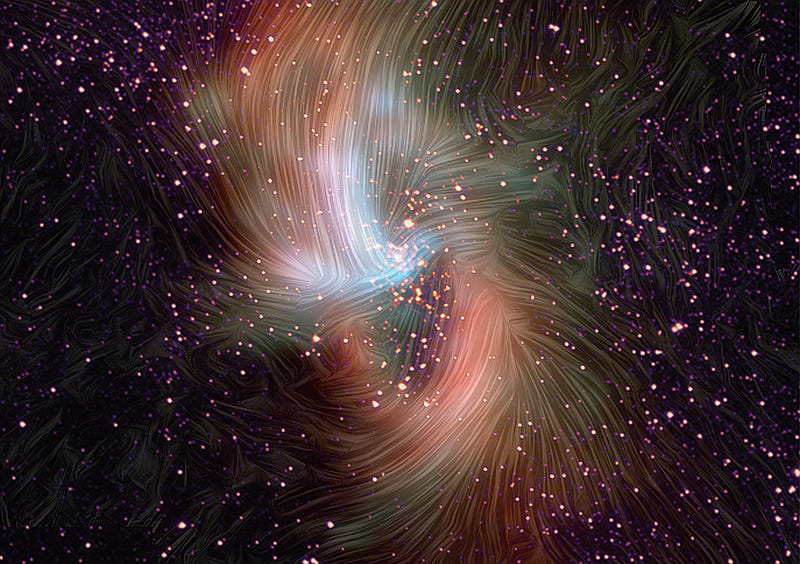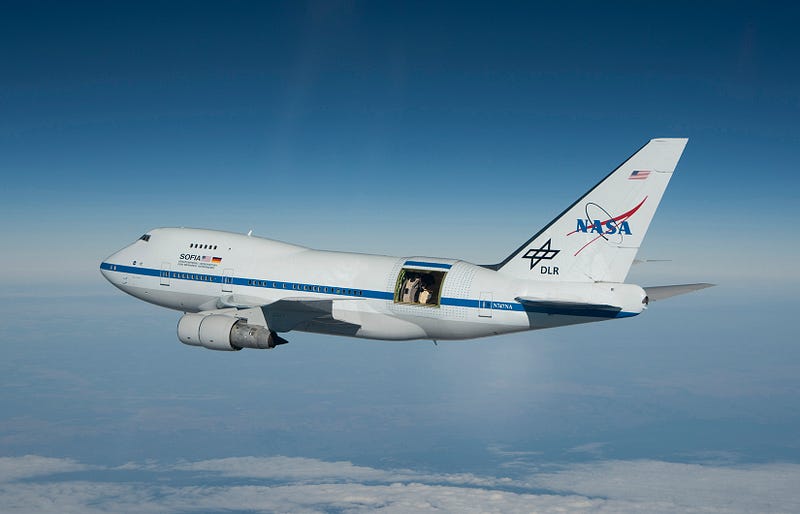Exploring the Magnetic Forces Shaping Our Milky Way's Black Hole
Written on
Chapter 1: The Dormant Giant
The supermassive black hole (SMBH) located at the heart of the Milky Way Galaxy has a mass approximately four million times greater than that of the Sun. Despite its immense size, this colossal entity remains inactive, leading astronomers to ponder the reasons behind its dormancy. Recent studies of a vast, spiral-shaped magnetic field surrounding the black hole may shed light on this cosmic puzzle.
Utilizing the Stratospheric Observatory for Infrared Astronomy (SOFIA), managed by NASA, researchers investigated Sagittarius A*, the SMBH situated roughly 26,000 light-years away from Earth. Their findings suggest that this black hole, affectionately referred to as 'Sag A Star,' might be hindered from consuming surrounding matter due to a powerful, spiral-shaped magnetic field.

Darren Dowell from NASA’s Jet Propulsion Laboratory explained, “The spiral structure of the magnetic field directs gas into an orbit around the black hole. This may help clarify why our black hole remains quiet while others are actively consuming matter.”
Since magnetic fields are invisible, capturing direct images of them is challenging, and collecting detailed evidence of their influence on matter has proven elusive. Nonetheless, these fields significantly impact the motion of charged particles and ions, which play a critical role in the formation of stars, galaxies, and planets. By drawing matter into a stable orbit, the magnetic fields may effectively prevent Sgr A* from feeding.
Joan Schmelz, an astrophysicist at NASA Ames Research Center, remarked, “This is one of the first occasions we can truly observe the interaction between magnetic fields and interstellar matter.”
Section 1.1: The Infrared Perspective
Supermassive black holes (SMBHs) are common across various galaxies. In many instances, these massive entities actively consume gas and dust. As matter spirals into these black holes, the process emits a wide spectrum of radiation, including infrared light, which we perceive as heat. If human vision were capable of detecting infrared wavelengths, we would see them just beyond the red spectrum in rainbows.
Astronomers aboard SOFIA employed the High-resolution Airborne Wideband Camera-Plus (HAWC+) to investigate the galaxy's center using far-infrared light. This wavelength allows for an examination of dust grains near Sgr A*, which align with the black hole’s magnetic fields, much like iron filings on paper over a magnet.
“At radio wavelengths, the most prominent feature in this area is Sagittarius A* (pronounced ‘Sag A star’),” states the UCLA Galactic Center Group. “This compact object is about one Astronomical Unit (AU) in size, which is significantly smaller than our solar system.”
The gravitational influence of Sagittarius A* governs the behavior of matter in the vicinity of the Milky Way's core. However, the specific characteristics of the magnetic field surrounding this SMBH remained largely unclear until SOFIA and HAWC+ turned their attention to this enigmatic entity.
SOFIA is not merely a modified 747SP jet; it's a sophisticated airborne observatory equipped with a telescope nearly 2.7 meters (106 inches) in diameter. On May 6, 1977, the aircraft was inaugurated by Anne Morrow Lindbergh, coinciding with the 50th anniversary of her husband’s historic solo transatlantic flight. NASA acquired the plane in 1997, subjecting it to a decade of enhancements. The 2017 re-christening was led by Erik Lindbergh, the grandson of the famous aviator.

Chapter 2: Unraveling the Mysteries of Black Holes
“Black holes are the seductive dragons of the universe, outwardly quiescent yet violent at the heart, uncanny, hostile, primeval, emitting a negative radiance that draws all toward them, gobbling up all who come too close…these strange galactic monsters, for whom creation is destruction, death life, chaos order.” — Robert Coover
Sagittarius A* was first identified in 1974 by astronomers Bruce Balick and Robert Brown, who published a paper documenting their discovery of a bright radio source emanating from a tiny region near the center of our galaxy.
This celestial object went through various names before astronomers settled on Sagittarius A*. Some researchers suggested calling it GCCRS (Galactic Center Compact Radio Source), a title that ultimately failed to gain traction.
The asterisk in its name is derived from the symbol used by atomic physicists to represent atoms in an excited state, which release energy into their surroundings. Brown believed that using this notation for the high-energy region at the galaxy's center would reflect its energetic nature.
If Sgr A* remains quiescent due to the surrounding magnetic fields guiding matter into stable orbits, this phenomenon might also explain the behavior of similarly quiet SMBHs in other galaxies. Conversely, the feeding frenzy of an actively consuming galactic black hole may result from magnetic fields that channel material directly into the gravitational abyss.
Even among supermassive black holes, having well-aligned magnetic companions seems to yield benefits.